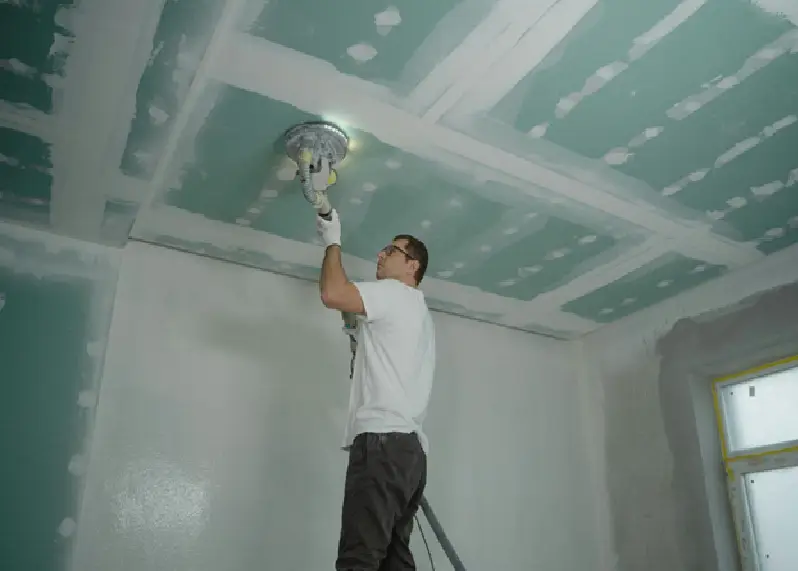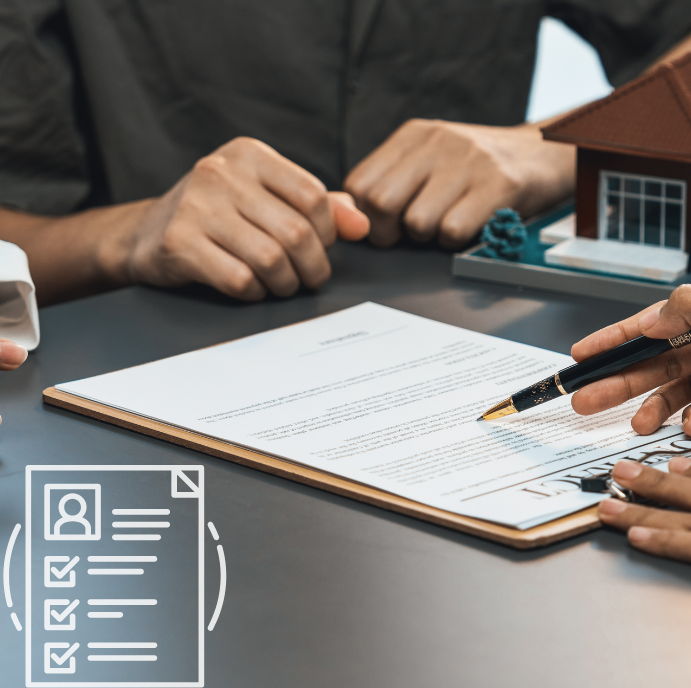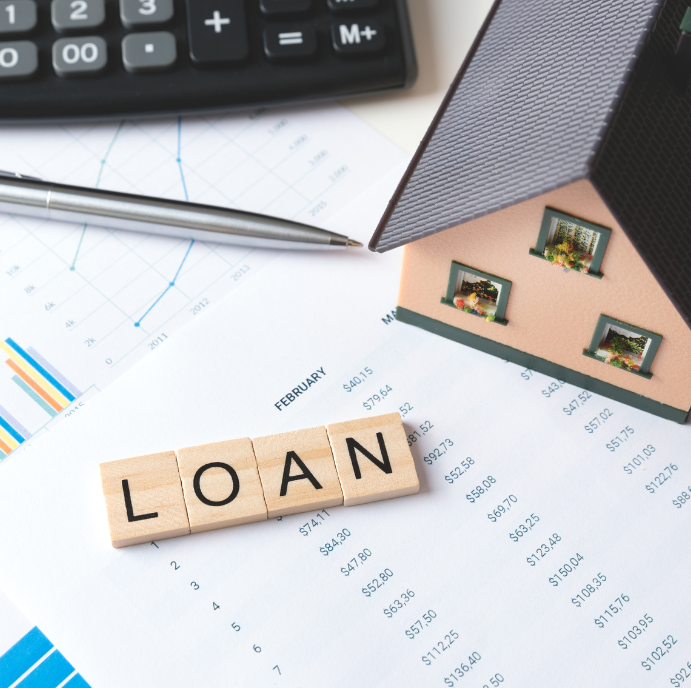|
Getting your Trinity Audio player ready...
|
There’s one real estate investment strategy that stands out for its dynamic nature and the potential it presents for quick, rewarding returns: fix and flips.
This approach to real estate investing is not just about buying low and selling high. It’s an art and science combined, demanding knowledge of market trends, renovation costs, and, most importantly, financing the entire operation efficiently with a fix and flip loan.
Navigating these financial waters comes with its unique set of challenges and opportunities. From calculating the After Repair Value (ARV) to understanding the 70% rule, each step is a critical component in maximizing your investment’s potential.
But, with a strategic approach and the right financing, the world of fix and flip investing opens up a world of possibilities for growing your real estate portfolio and achieving your investment goals in the US real estate market.
How Do Fix and Flip Loans Work?
Fix and flip loans are specialized financial tools designed to support investors in the process of purchasing, renovating, and selling properties at a profit.
These loans cater specifically to the unique timeline and cost demands of fix and flip projects, offering a blend of purchase and renovation funding under one umbrella. This financing option is crucial for tapping into the potential of real estate flipping without having to obtain a traditional, long-term mortgage.
Central to mastering fix and flip investments—and by extension, fix and flip loans—are two key metrics: the 70% rule and the After Repair Value (ARV) formula. These principles guide investors in making informed decisions about which properties to invest in and how to budget for their projects.
70% Rule
The 70% rule is a widely used guideline suggesting that an investor should not pay more than 70% of a property’s ARV minus the costs of renovations for the property. This rule is instrumental in safeguarding your investment margins. It helps ensure that you’re not overpaying for a property, leaving ample room for renovation expenses and potential profit upon sale.
After Repair Value (ARV)
ARV represents the estimated value of the property after all repairs and upgrades are completed. Calculating the ARV requires a keen market insight and an understanding of how various improvements will enhance the property’s value.
In addition to being a key part of the 70% rule, it also plays a critical role in determining the amount you can borrow with a fix and flip loan. Lenders often use the ARV to assess the viability of your project and the loan-to-value ratio, which in turn influences their willingness to fund your venture.
Distressed Properties
Distressed properties are key to the fix and flip strategy, allowing investors to purchase below market value. These are homes that are either on the brink of foreclosure, already foreclosed and owned by a bank, or in some form of financial distress.
What Are Distressed Properties?
A distressed property is typically a home whose owner is unable to meet mortgage obligations, leading to a pre-foreclosure state, foreclosure, or repossession by the bank (known as Real Estate Owned or REO properties). These situations arise from various financial hardships faced by the owner, such as unemployment, divorce, medical emergencies, or poor financial management.
Reasons Behind Distress
The distress in properties usually stems from financial difficulties encountered by the property owner, making it impossible for them to keep up with mortgage payments. This can lead to several scenarios, including:
- Pre-foreclosures, where the lender has notified the borrower of default but the property has not yet been foreclosed.
- Foreclosure auctions, where the property is sold to the highest bidder to recover the defaulted loan amount.
- Bank-Owned (REO) properties, which have been foreclosed and are now owned by the bank.
- Government-Owned properties, which are homes that have been seized by the government due to tax liens or other legal issues.
Identifying Distressed Properties
Finding distressed properties requires diligence and sometimes creative strategies, as these are not always listed in traditional real estate listings. Here are a few methods to identify them:
- Online Listings and Databases: Websites specializing in distressed properties can be invaluable resources. Look for listings marked as “bank-owned,” “REO,” or “foreclosure.”
- Local Courthouse Records: Pre-foreclosure and foreclosure notices are public records. Visiting your local courthouse can uncover potential investments.
- Networking: Real estate agents, attorneys, and even local residents may have leads on distressed properties.
- Direct Mail Campaigns: Targeting homeowners who are delinquent on their mortgage or tax payments with direct mail can yield opportunities.
- Driving for Dollars: Driving around neighborhoods to spot signs of neglect, such as overgrown lawns or boarded-up windows, can indicate a distressed property.
While investing in distressed properties can offer significant returns, it’s important to conduct thorough due diligence and a thorough market analysis.
Conducting a Market Analysis
Conducting a thorough market analysis is the cornerstone of a successful fix and flip investment and a critical step in securing financing. This process involves evaluating various factors that influence the real estate market, property values, and ultimately, the profitability of your investment.
Just as importantly, a well-researched market analysis bolsters your case when approaching lenders for financing, demonstrating due diligence and the potential for a profitable return on investment.
Local Real Estate Trends
Keeping a pulse on local real estate trends is crucial for identifying the right time to buy and sell. This includes understanding current and projected market conditions, such as buyer demand, inventory levels, and average days on market. Analyzing these trends helps you gauge the overall health of the real estate market and anticipate shifts that could impact your investment.
Identifying Desirable Neighborhoods
The success of a fix and flip project hinges on its location. Researching and identifying neighborhoods that are in demand, show signs of growth, or are undergoing revitalization can lead to more profitable flips. Factors to consider include school districts, crime rates, local amenities, and access to transportation.
Off-Market Properties and Real Estate Bird Dogs
Off-market properties can be hidden gems, offering opportunities for below-market purchases. One way to find these properties is through real estate bird dogs—individuals who scout out potential investment opportunities for a fee or commission. Bird dogs can be invaluable in competitive markets, providing you with leads on properties not yet listed on the open market, giving you a head start on acquiring promising properties to fix and flip.
Evaluating Property Values and Appreciation Potential
This part of the market analysis involves analyzing comparable sales (comps) in the area, assessing the property’s condition, and estimating the cost and impact of renovations. Investors should also consider long-term factors that could affect property values, such as planned infrastructure developments or changes in zoning laws. Accurate property valuation ensures that you’re making a sound investment and sets the foundation for determining your renovation budget and expected profit margin.
Market Specific Risks
Every real estate market comes with its own set of risks, such as natural disasters, economic downturns, or oversaturation of flipped properties. Conducting a risk assessment as part of your market analysis can help you identify and mitigate potential challenges. Understanding these risks enables investors to plan contingencies and make more strategic investment decisions.
How To Estimate Potential ROI for Fix and Flip Real Estate
When considering the potential return on investment (ROI) for fix and flip real estate projects, several key elements come into play:
- Acquisition Price: The purchase price of the property is the starting point for calculating ROI. Securing a property below market value, often achievable with distressed properties, can substantially increase the potential for profit.
- Renovation Costs: These include all expenses related to rehabilitating and upgrading the property. Accurate estimation of renovation costs is critical, because underestimating can erode profits, while overestimating may deter you from a viable project. Costs encompass labor, materials, permits, and a hedge for unexpected repairs.
- After Repair Value (ARV): This is the projected value of the property after all renovations are completed. ARV is determined by analyzing comparable sales in the area and understanding the impact of your improvements on the property’s value.
- Market Conditions: The current and anticipated real estate market conditions in your area influence ROI. Factors such as housing demand, interest rates, and economic stability play roles in how quickly and profitably you can flip a property.
- Holding Costs: These are the costs associated with owning the property during the renovation and sale process, including property taxes, insurance, utilities, and loan interest. Minimizing the holding period reduces these costs, which in turn can increase ROI.
- Selling Expenses: When calculating ROI, consider the costs of selling the property, which can include real estate agent commissions, closing fees, and any concessions to the buyer.
- Time Frame: The duration of the renovation and sale process also affects ROI. A quicker turnaround means lower holding costs and allows you to move on to the next project sooner, potentially increasing your total return.
Example of a Fix and Flip Investment
Now let’s walk through a hypothetical example illustrating the fix and flip process from acquisition to sale.
Finding the Right Property
You come across a distressed property in a promising neighborhood. The house, while in need of significant updates and repairs, is located in an area known for its rising property values. You purchase the property for $150,000, a price well below the estimated market value of $250,000 due to its condition.
Financing the Project
To finance the purchase and renovation, you secure a short-term loan with an interest rate of 10% per annum. Given the scope of work needed, you estimate the renovation costs at $50,000. This includes materials, labor, permits, and a contingency for unexpected expenses.
Renovation Phase
Over the next three months, you diligently manage the renovation process. The updates include a kitchen remodel, bathroom upgrades, new flooring throughout, and a fresh coat of paint inside and out. Additionally, you enhance the curb appeal with landscaping improvements.
Holding Costs
During the renovation, you incur holding costs totaling $9,000. These costs encompass property taxes, insurance, utility bills, and loan interest.
Selling the Property
After renovations are complete, the property looks spectacular and is ready to hit the market. Based on comparable sales in the area and the quality of your upgrades, the after repair value (ARV) of the property is estimated at $250,000. You list the property, and within a month, you accept an offer at the asking price.
Calculating ROI
Now, let’s break down the numbers to understand your return on investment (ROI):
- Purchase Price: $150,000
- Renovation Costs: $50,000
- Holding Costs: $9,000
- Total Investment: $209,000
- Sale Price: $250,000
- Selling Expenses (including real estate agent commissions at 6%): $15,000
- Net Profit: $250,000 – $209,000 – $15,000 = $26,000
Given your total investment of $209,000, your net profit is $26,000. To calculate ROI, you divide the net profit by the total investment:
- ROI = (Net Profit / Total Investment) x 100 = ($26,000 / $209,000) x 100 = 12.44%
In this scenario, your fix and flip investment yielded a return of 12.44% over approximately four months.
While the numbers are hypothetical, they provide a framework for understanding the financial dynamics at play. Remember, each fix and flip project is unique, and thorough research, precise budgeting, market knowledge, and obtaining the right fix and flip financing option are keys to success.
Pros and Cons of Fix and Flip Investing
Fix and flip investing can present an attractive avenue for generating potentially substantial returns in a relatively short period. However, it’s important to recognize that this strategy may not align with everyone’s financial goals or risk tolerance.
Like any investment opportunity, fix and flip projects come with their own set of advantages and disadvantages. It’s crucial to weigh these factors carefully to determine whether this path is right for you.
Advantages
- Potential for High Returns: One of the most appealing aspects of fix and flip investing is the opportunity to earn significant profits in a short timeframe. Successful flips can yield substantial returns on investment, which could be higher than those associated with traditional long-term rental properties.
- Control Over Value Creation: Fix and flip projects allow investors to actively influence the property’s value through renovations and upgrades. This hands-on approach to value creation can be more satisfying and potentially more rewarding than passive investment strategies.
- Market Knowledge and Skills Development: Engaging in fix and flip projects can enhance your understanding of the real estate market and develop valuable skills in renovation, negotiation, and project management. This knowledge can be useful for future investments and endeavors in the real estate industry.
Disadvantages
- Financial Risk: The potential for high returns comes with a corresponding level of risk. Unexpected issues during the renovation process, such as structural problems or increased material costs, can quickly erode or eliminate profit margins.
- Time and Effort Requirement: Fix and flip projects demand a significant amount of time and effort, from identifying the right property to managing renovations and navigating the sales process. This investment strategy may not be suitable for individuals looking for passive income sources.
- Market Dependence: The success of a fix and flip project is heavily reliant on market conditions. A downturn in the real estate market can result in longer holding times or reduced sale prices, impacting overall profitability, or selling the property at a loss.
Step-by-Step Guide for Securing a Fix and Flip Loan
Financing your fix and flip project can significantly amplify your investment power compared to paying all in cash.
While using cash eliminates loan costs and interest, leveraging a fix and flip loan allows you to spread your capital across multiple projects, potentially increasing your overall returns. Loans can also provide a buffer for unexpected expenses, ensuring you don’t stretch your resources too thin.
Now, let’s explore the general steps to secure a fix and flip loan, keeping in mind that specifics can vary between lenders.
1. Understand Your Project and Needs
Before approaching lenders, have a clear understanding of your project. Know the purchase price, estimated renovation costs, projected after-repair value (ARV), and timeline. Being well-informed demonstrates to lenders that you are serious and have done your homework.
2. Check Your Financial Health
Lenders will evaluate your assets and financial history to assess risk. Ensure your credentials are in good shape and organize your financial documents. While requirements vary, being prepared with personal financial statements and tax returns can help strengthen your application.
3. Prepare a Detailed Proposal
Create a compelling business plan that outlines the scope of your project. Include purchase details, renovation budget, comps supporting your ARV, and your plan for executing the flip. A detailed proposal can help convince lenders of the viability and profitability of your project.
4. Apply and Review Terms
Once you’ve selected a lender, submit your application along with any required documentation. Be ready to discuss the terms, such as interest rates, loan-to-value ratios, and repayment schedules. Ensure that the loan terms suit your business plan for the fix and flip.
5. Close the Loan
After your loan is approved, there will be a closing process similar to purchasing a property. This involves signing documents, paying any upfront fees, and officially securing the funds. Ensure you understand all the terms and conditions before closing.
6. Start Your Project
With financing in place, you’re ready to begin your fix and flip project. Manage your renovation efficiently to stay within budget and timeline, aiming for a successful sale and a solid return on your investment.
Unlock the potential of US property investment with ease, no matter where you are in the world. Lendai specializes in providing efficient and hassle-free loan approvals for international investors.
Contact Lendai today and join the ranks of satisfied customers who have made their investment dreams a reality.






